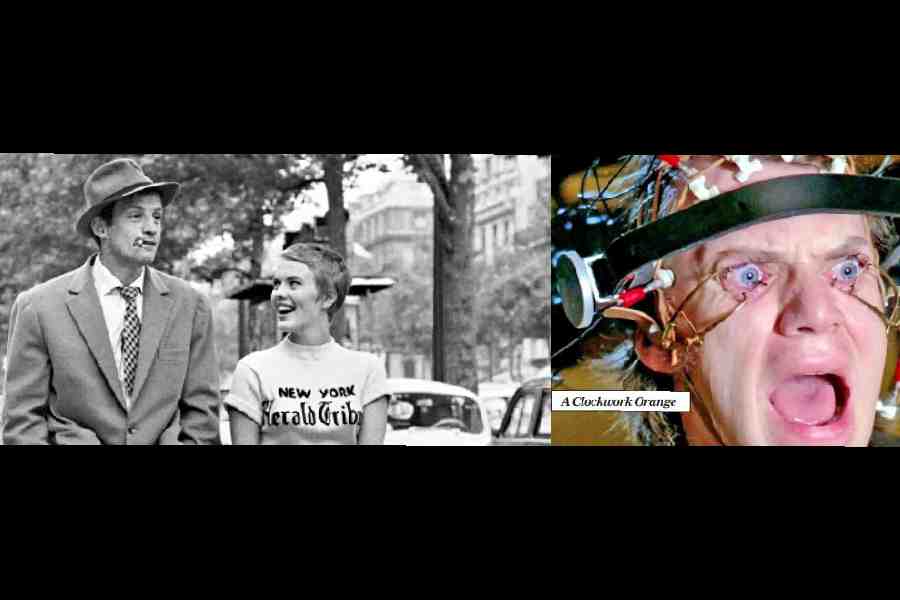He calls it a dictionary for students of cinema. Film-maker Ashoke Viswanathan has come up with a series of video essays titled Masters of Cinema, where he talks about 16 film directors, from Ray to Tarantino. Their craft has been analysed in terms of storytelling, their worldview, the styling of camera and editing and the message these masters wanted to convey. “It’s either me talking or there are graphics to illustrate the concepts and there are stills,” says Ashoke. Masters of Cinema is produced by INFOCOM, under the creative mentorship of Robin Ghosh. A t2 chat.
Tell us more about Masters of Cinema.
It is a ready reference in relation to those who we consider as the masters of cinema. Our idea is to take up around 100 film-makers from all around the world including Japanese, Indian, Latin American, European and Asian cinema. For the moment, we have decided to include 16 film-makers, who are considered to be significant. We are not putting in clips... this is a pure academic presentation which includes audiovisual, graphics, stills and paintings. The only moving picture is the anchor who is actually going to lecture on the film-maker. I have done all the 16 lectures so far.
Focusing more on the work of the film-maker, we have created video essays on filmmakers like Stanley Kubrick. I have dealt with films like A Clockwork Orange. I have explained the concept behind the film. We have also taken up the themes and preoccupations behind the concept and style of 2001: A Space Odyssey, giving examples of the music that was used, and how a piece of semi-classical music could work as a futuristic piece of music. I have also talked about the transcendental cut which Kubrick used in the preamble.
Have you talked about the films by Godard?
Yes, we have tried to show how he used the signifier as part of his main presentation... meaning he does not hide his apparatus of illusionism. He uses techniques like interruption, contradiction, and refraction to disturb the viewer so that the viewer thinks.
Are there funny anecdotes too?
Yes, Hitchcock, for example, had all the tram routes in London memorised. So the names of the places would be mentioned on his clapper board. We have included a bit of humour.
The episodes range from 20 to 25 minutes.
Yes. The one on Satyajit Ray is almost 27 minutes. Tarkovsky is about 26 minutes. The 16 episodes have been shot. We have also talked about Ozu, who had a peculiar style of low-angle shots. While doing these lectures I found so many interesting things about film-makers like Bergman or Fellini. Tarantino is influenced by both Kubrick and Godard. This exploration would help in regenerating interest in cinema.
What did you have to say about Ray?
We have dealt with some of the little-known aspects of his craft. He is a great storyteller but I have pointed out that there have been occasions when he has deviated from the story. He has gone into a discursive mode in a film like Kanchenjunga. In films like Pratidwandi, he has deviated from straightforward storytelling. People call him a liberal humanist. Others say that he is a neo-realist. But that is one way of looking at it. I would like to say that Ray defies categorisation because of the variety of genres he has worked in. And he has written original texts like Kanchenjunga and Nayak. Also, his influences. There is a strong influence of Bergman and Fellini in Nayak.
It is Mrinal Sen’s birth centenary year and an occasion to rediscover the man and his legacy.
We have talked about his different phases. The first was the neo-realist phase. Then came the middle phase with films like Akash Kusum. Then comes the phase when he deals with the strife in the country with films like Interview and Padatik. Then comes the phase when he is looking inwards in films like Ek Din Pratidin and Ek Din Achanak. People disappear without a reason. For Sen’s films, I have given an overview. Godard was a strong influence on Sen. As also on Bertolucci and Oshima.
Do you talk about your interactions with Ray or Sen?
Not quite. I was present at the shoot of quite a few Ray films. I have worked for Sen. Maybe in the future, I will weave in my own experience. I was present on the sets of films such as Jana Aranya and Shaka Prashakha. I have partially done the voice-over for Sen’s Calcutta My Eldorado.
You talk about Tarantino in great detail.
Yes. He did not go to any film school. He went to ‘films’. That was the starting point. There is a dance sequence in Pulp Fiction featuring John Travolta and Uma Thurman, which is a take-off on a dance in Godard’s Bande a part, which is a take-off on Truffaut’s Jules and Jim. I talk about his use of ambiguity, pop culture, violence... the way he crumples up the narrative. The style in Once Upon A Time in Hollywood is so withdrawn and reticent. The opening sequence of his Inglourious Basterds is cut in typical Hollywood fashion. The transition is so seamless. You don’t feel the cuts. Then suddenly it becomes a World War II story in reverse. He presents an alternative version of World War II. I have also talked about Kill Bill.
Who is your favourite film-maker?
Two of them. Tarkovsky and Godard. I like Godard because of the way he completely dispenses with the narrative. Without a story, an audio-visual presentation can be made. The Tarkovsky episode has a lot of layering. You can just experience his films. I have talked about the concept of levitation in his films. Many other film-makers also come into the mix.











